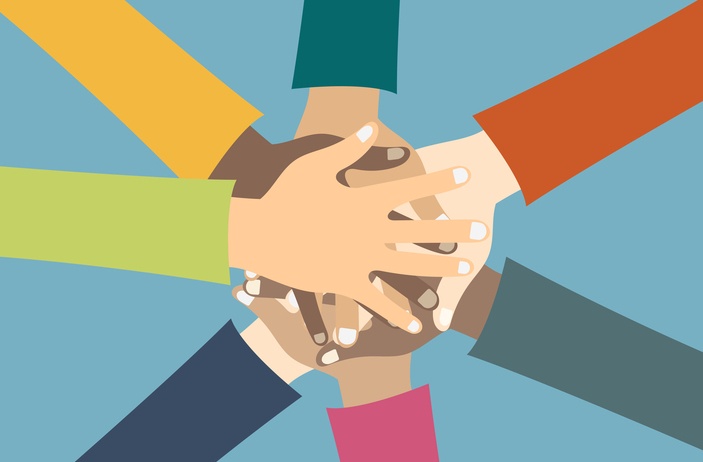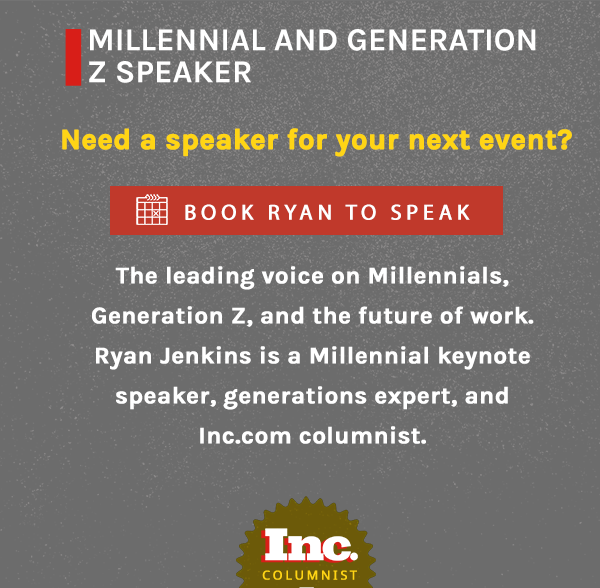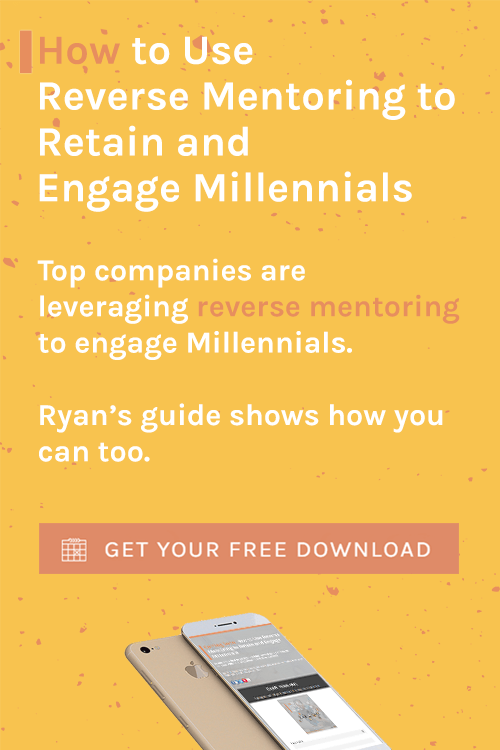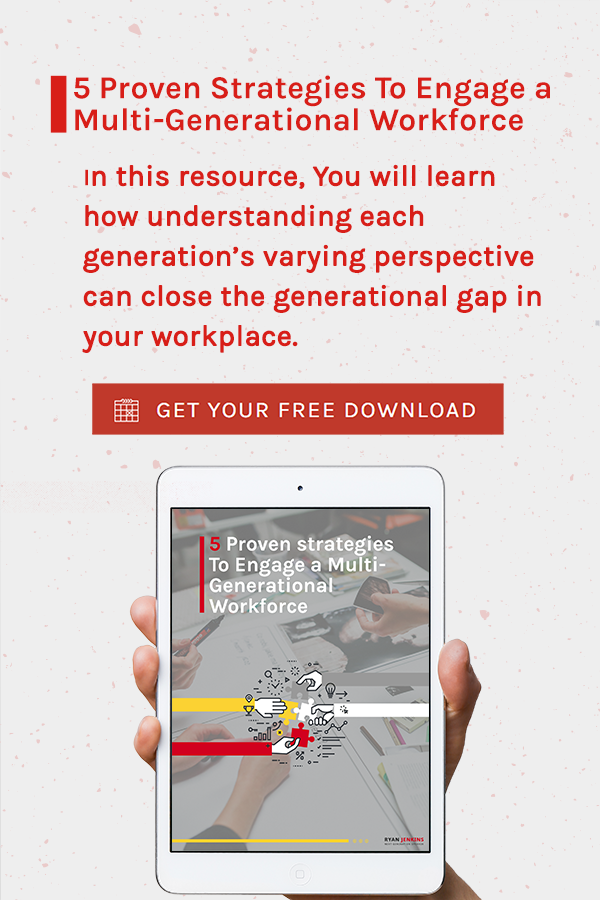Create more innovation and greater generational cohesion across teams by leveraging these strategies.

There is no doubt that teaming and collaborating are mission critical for any company. In fact, around 75 percent of employers rate teamwork and collaboration as "very important," and 97 percent of employees and executives surveyed believe that lack of alignment within a team directly impacts the outcome of a task or project.
What workplace teaming and collaboration is supposed to look like is different across generations. When building connections across generations, appeasing everyone is not feasible. However, neglecting to build generational cohesion can leave the team exposed and organization vulnerable. Communication and collaboration challenges will always exist across generations; it's a tension to manage instead of a problem to solve.
With more generational diversity in the workplace than ever before, getting Millennials to team and collaborate across generations is a challenging and historic endeavor.
For generations to work well together, organizations must foster environments that encourage collaboration, support teamwork, and promote generational understanding so that the unique strengths of every generation can be mined for the greater good of the entire team.
7 Proven Ways to Get Generations Working Effectively Together
1. Showcase knowledge.
Make it clear that every employee has something to teach and something to learn. Create informal or formal settings where employees can share their expertise in a specific area. The content doesn't have to be business or industry related...think TED-like presentations. Perhaps even consider creating a TEDx event for your organization and have employees submit their ideas for topics.
The collective sharing of expertise and passions will not only alert Millennials of the wealth of knowledge that surrounds them but will provide helpful context for how or when to approach the individual for help or collaboration on a project.
2. Generational training.
Training on who the generations are, motivators for each one, and how to work together is helpful for greasing the wheels of generational collaboration. Generational training creates awareness and appreciation, builds empathy, and helps a multigenerational workforce find common ground in their similarities and differences.
This knowledge can be especially helpful as more and more Millennials have begun to lead Generation X and Baby Boomers. (Contact me directly for help in this area.)
3. Affinity groups.
Launch a young-professional affinity group (a group formed around a shared interest or common goal), where all generations are welcome to learn and grow together.
Creating opportunities for employees to have regular cross-generational contact is important to diminish misconceptions in the minds of employees.
4. Reverse mentoring.
Reverse mentoring is a learning relationship where the mentor is younger than the mentee. Creating two-way conversations where both parties are learning and can see the value the other brings to the workplace can lead to effective teaming and collaboration. (Read this to learn more about reverse mentoring.)
5. Team-building activities and events.
A generationally diverse workforce requires intentional team building. According to a 2015 poll by The Go Game, 79 percent of Millennials found that "team" or "culture" building activities in their organizations significantly helped retain talent; 88 percent of Millennials and 76 percent of Baby Boomers said team building was worth the time and effort.
Team building done right can be a strong Millennial retention tool, but forced and antiquated styles of team building can be a Millennial repellent.
Effective team-building activities for Millennials should be...
- Collaborative. Avoid activities that encourage independent involvement or single out a team member. Instead, focus on activities that require team effort.
- Meaningful. Resist team building for the sake of team building. Ensure that each activity or event has a worthwhile purpose with outcomes that make a difference.
- Dynamic. Millennials will disconnect if the activity is poorly organized, overly complicated, or begins to drag.
- Innovative. Mobile or virtual games can inspire creativity and prompt Millennials to collaborate with teammates.
- Gelling: Akeakami Quest is a team-building application that puts teams on a virtual deserted island where they must exercise effective communication techniques and work as a team to succeed. The game is specifically designed for Agile and Scrum teams, but the game can improve any team's overall performance. (You can find the game in Apple's App Store.)
- The Go Game couples mobile technology and skilled game producers to offer innovative and fun team-building activities. Examples of a few of the games include building bicycles for charity, creating a continuous musical lip-dub video, producing a short film, and a treasure hunt to collect toys or supplies for charity.
Effective team-building activities and events cultivate stronger connections that equip teams to communicate better, make decisions faster, and ideate bigger.
6. Flatten hierarchy.
Ever since the dawn of the Internet, power and ownership have shifted toward individual consumers and employees. The information age has created more democratization in the business world. For leaders to optimize their diverse, multigenerational teams, they need to increase collaboration and ownership.
Adaptability and agility are highly valuable team traits to possess in a high-flux world. Creating a corporate structure that lets ideas be exchanged more effortlessly and seamlessly throughout the organization is not only attractive to Millennials but a necessity for any organization to remain relevant.
To get the most out of cognitive diversity, each generation (no matter one's rank or role in the organization) should lead. A flatter hierarchy builds trust across generations and creates transparency that enables each generation to understand the value of their colleagues' contributions.
7. Enhance technology.
A relevant struggle when it comes to cross-generational collaboration is enhancing technology to optimize Millennials and meet their innovative expectations without overwhelming or alienating other generations who are used to the existing processes.
This very tension represents a ripe opportunity for generational teaming and collaboration. Millennials can coach (aka reverse mentor) previous generations about the benefits of the new process and the best practices for integrating it into one's daily workflow.
This is 1 of the 47 strategies Ryan shares in his new book, The Millennial Manual: The Complete How-To Guide to Manage, Develop, and Engage Millennials at Work.
I help companies better lead, engage, train, and sell to Millennials and Generation Z. If you’d like help solving tough generational challenges inside your organization, click here.





